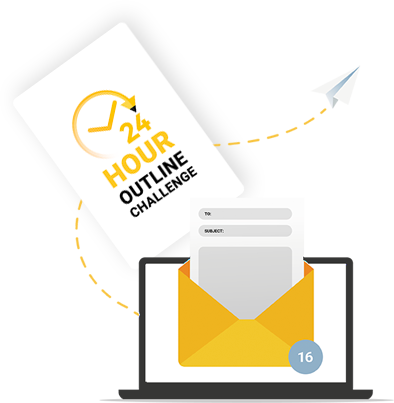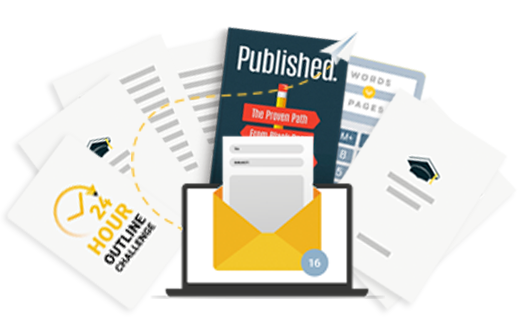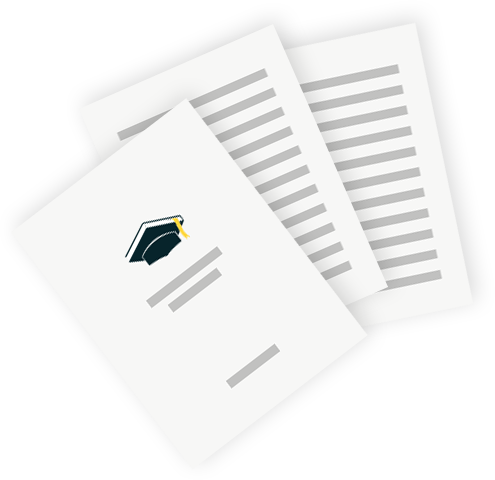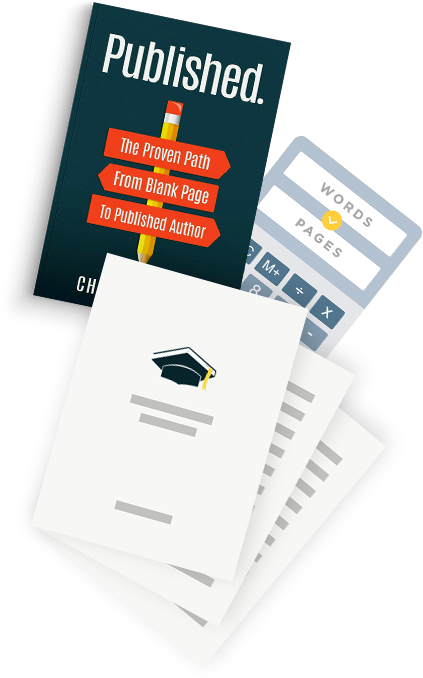All stories have a driving force—something that moves it along and makes the story actually “happen.” While every story will have a unique drive, most stories can be broken into two categories: Plot-driven vs Character-driven.
But what’s the difference, and which one should we use to write our own stories?
What is a character-driven book?
When we describe a book as “character-driven,” we mean the book centers on the characters, their internal world, their relationships, and the ultimate transformation they experience by the end of the story.
In a plot-driven story, the focus is more on the things a character deals with, while a character-driven story focuses on why the character deals with those things in the way they do.
In a plot-driven story, a character is used to view the plot. In a character-driven story, the plot is used to develop the character.
A character-driven book almost always follows a dynamic character. In order to make a lighter plot interesting, we really need to dive into creating a compelling and driven main character. Their arc is what makes the story.
- Related: Redemption Arc
- Related: Flat Character Arc
How do I write a character-driven story?
The goal of a character driven story should be to create a deep and rich internal world for your main character.
- One thing they need is a backstory. Your reader needs context to understand your character, where they’re coming from, and where they’re trying to go. A strong backstory provides important building blocks for your character driven story.
- In every book, there is a conflict in a story, but in a character-driven story, the internal conflict becomes more important. Outside of the external forces working against the character, how are they struggling with themselves? The point of a character-driven story is the transformation, or arc, of that character. See our article on Rising Action.
- Along with internal conflict, your character needs a strong voice and perspective. Why are they our main character? What makes them and their struggle unique? See this article on Voice in Writing.
- Make your character complex. We need to see the good, the bad, and the ugly about the characters who drive the story. They should have contradicting character traits, big and small flaws, and circumstances they just can’t overcome on their first try. A perfect character is a boring character. See our article on Character Development.
- Perhaps the most important piece of advice for a character-driven story is: Make them active. A strong leading character will respond to their environment. How do they react to circumstances, and how do those choices change them?
Overall, focus on the current state of your characters, their thoughts and emotions, how they internalize their world and the things that happen to them, and how they react to the events of the story.
Rather than the focus being on the story’s events, we should focus on how the character reacts to those events, then ultimately how they drive the character to change by the end of it.
What is a plot-driven book?
A plot-driven book centers on events. These are usually genre novels with exciting scenes and a quickly moving story. These are the “page turners.” Horror, zombies, action-adventure, westerns, sci-fi, fantasies, and similar genres are typically driven by plot.
- Related: Turning Points
- Related: How to Write a Thriller
- Related: How to Write a Mystery
These stories should still have well-developed, intriguing characters, but you’ll see a lot less depth to their personalities, arcs, and motivations. The choices your characters make and the results of those choices are reflective more of plot progression than they are of character development. It’s less of a question of why something is happening and more of what is happening?
Character development can, and should, be an important part of a plot-driven book, but it’s usually a subplot and not the main focus.
A plot-driven book typically has the end in sight. It’s a story of how these characters get from point A to the clear point B. A character-driven story beats won’t be so clearly cut.
How do I write a plot-driven story?
When a story is driven by plot, you need stuff happening. Here are a few ways to do that.
- Focus on events. Your character arcs are secondary to the actual plot beats of your story. See our article on How to Write a Novel.
- Plan your plot. It’s harder to wing, or “pants”, a plot-driven story, because the event beats are the whole point of the story. Plotting out your book ahead of time allows you to plan the arc of the narrative, pace it properly, and work in twists. See our article on Pantsers vs. Plotters.
- While planning your story, make sure there are real, active stakes. The characters should stand to lose it all if they don’t succeed.
- That said, there should be a clear causality. Plot-driven books need to have a real cause-and-effect structure, not just a series of unrelated events.
The story should progress to the point of climax, where all of the tension building pays off in a significant way.
Focus on the intricacies of the plot and events of the story, as well as the ultimate goal they’re building up to.
Do readers prefer plot-driven vs character-driven stories?
Both!
Readers who prefer character-driven stories typically enjoy the enhanced view of the character’s inner world. Characters in these types of stories are much more fleshed out, and thus more relatable for real people. It’s usually easier to connect with characters who are fully developed.
Some readers prefer plot-driven stories, which you’ll see more in genre fiction. Your average zombie novel is going to be about, you guessed it, zombies. Sci-fi, fantasy, and other genres with high concept stories and settings will often favor plot-driven stories over character-driven stories. Of course, that doesn’t always have to be the case, but it’s often true.
A plot-driven story has a certain reliability and certain expectations.
That’s also why books like zombie novels often have many POV characters, rather than just one or two. It’s more about seeing the world and subplots rather than focusing on one person.
Think of Game of Thrones. It’s a wonderful series that tells many stories, but how relatable do you find those characters? They’re certainly interesting, but they’re used more as vessels for the story to be told through rather than characters with rich inner workings that the reader can become intimately familiar with.
Very few books can balance being equally character-driven and plot-driven in the same story. The only book that comes to mind that might be equally driven by the character and by the plot is I Am The Messenger by Markus Zusak. We’re in a close-perspective with only one character, who we grow to know very intimately, and whose inner workings and character arc are a big focus of the book.
But the only reason there’s a story is because of the very strange thing happening to the character. Without the plot, there would be no story, and without the character, that particular plot wouldn’t matter. I Am The Messenger is a strong example of a book that is balanced and driven by both plot and character.
Now let’s look at examples of books that lean one way or the other.
Examples of character driven books
Character-driven books are typically considered the “literary” genre. Most of the classics are driven by their characters, and most have little plot otherwise.
The Awakening by Kate Chopin
The Awakening closely follows the protagonist, Edna, as she struggles with her own identity and the social expectations foisted on her as a woman living in the late 19th century. This novel is almost entirely learning about Edna’s inner workings and watching her character struggle and change. The story is driven by Edna’s life and perspective.
Pride and Prejudice by Jane Austen
Pride and Prejudice is much the same as The Awakening, following Lizzie through her daily life with the typical struggles a clever woman of her time would go through. If the same story happened from her sister, Kitty’s, perspective, the story wouldn’t exist. It’s specifically Lizzie’s experience and personal changes that makes the story.
Animal by Lisa Taddeo
Animal is a fictional memoir from the perspective of a woman who has faced nothing but hardships in her life. It’s essentially a letter to her child, recounting her life in excruciating detail. There’s nearly no plot—just a series of events from this person’s life, her reaction to the events in the moment, and her reflection on it afterward. It’s a dark and gripping tale that completely hinges on the narrator and how she changes by the end of the story.
Breakfast at Tiffany’s by Truman Capote
Breakfast at Tiffany’s follows an exterior view of the complex and iconic Holly Golightly. The story is about her complexities and contradictions, by way of her neighbor’s (the narrator’s) understanding of her. This book is a strong example of a story that’s completely character-driven.
Examples of plot driven books
Plot-driven stories are usually considered “genre” fiction. Sci-fi, fantasy, westerns, mysteries, horror, and other higher concept genres are often plot-driven. That doesn’t mean the stories don’t have strong and interesting characters—the story simply isn’t propelled by the characters.
The Poppy War by RF Kuang
This story follows a strong and wonderfully unique character, but it is still driven by the plot of the story. Without the plot, the character would not exist as she does. If there were no Poppy War, there’d be no The Poppy War.
Jurassic Park by Michael Crichton
Jurassic Park is plot-driven. The actions and disasters of the plot are what drive the story forward. While our characters do undergo changes, the changes are responses to the plot, not the thing driving the story forward. A fun, dynamic cast of characters doesn’t mean a story isn’t plot-driven.
The Hunger Games by Suzanne Collins
This series has some of my favorite characters ever written. They’re complex and interesting, realistic and exciting, and their arcs are well-developed. However—without the Hunger Games, there would be no The Hunger Games. The circumstances of the plot undoubtedly drive this story, even with Katniss and the supporting cast being compelling and active characters.
Should my book be character-driven or plot-driven?
Your goals will dictate if your book is driven by its characters or driven by the plot. Knowing which force should drive individual stories becomes easier with intentional reading. Think of your favorite books.
Are they driven by plot or character? Can you express how and why the story is driven by that force? Understanding the types of stories better served by which method will help you understand which one should drive your own.
Whichever driving force you choose, there should still be a balance. Writing a plot-driven story doesn’t mean you can neglect your characters, and vice versa.
While some readers have preferences for character or plot-driven stories, a well-written story should appeal to both groups.
As always, there are no right or wrong ways to write a book! Experiment with different forms of writing until you find what suits the story itself, as well as your personal style.
Happy writing!



